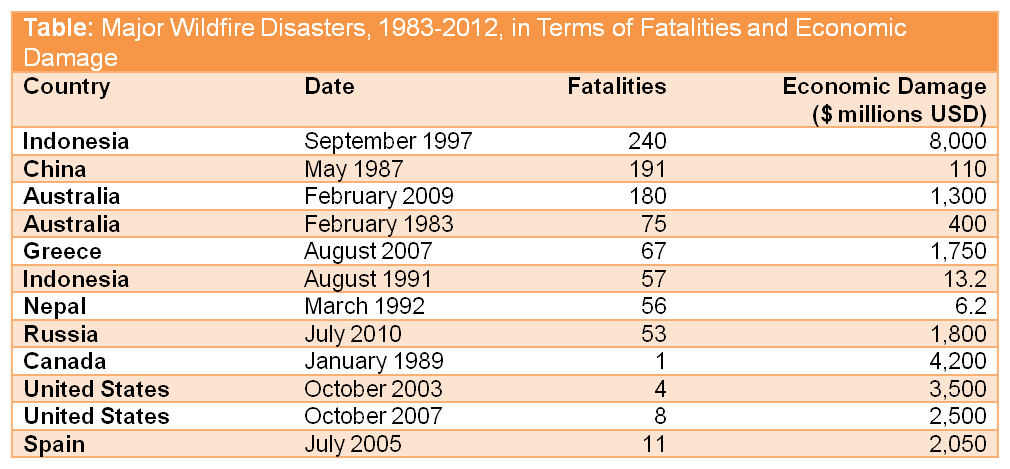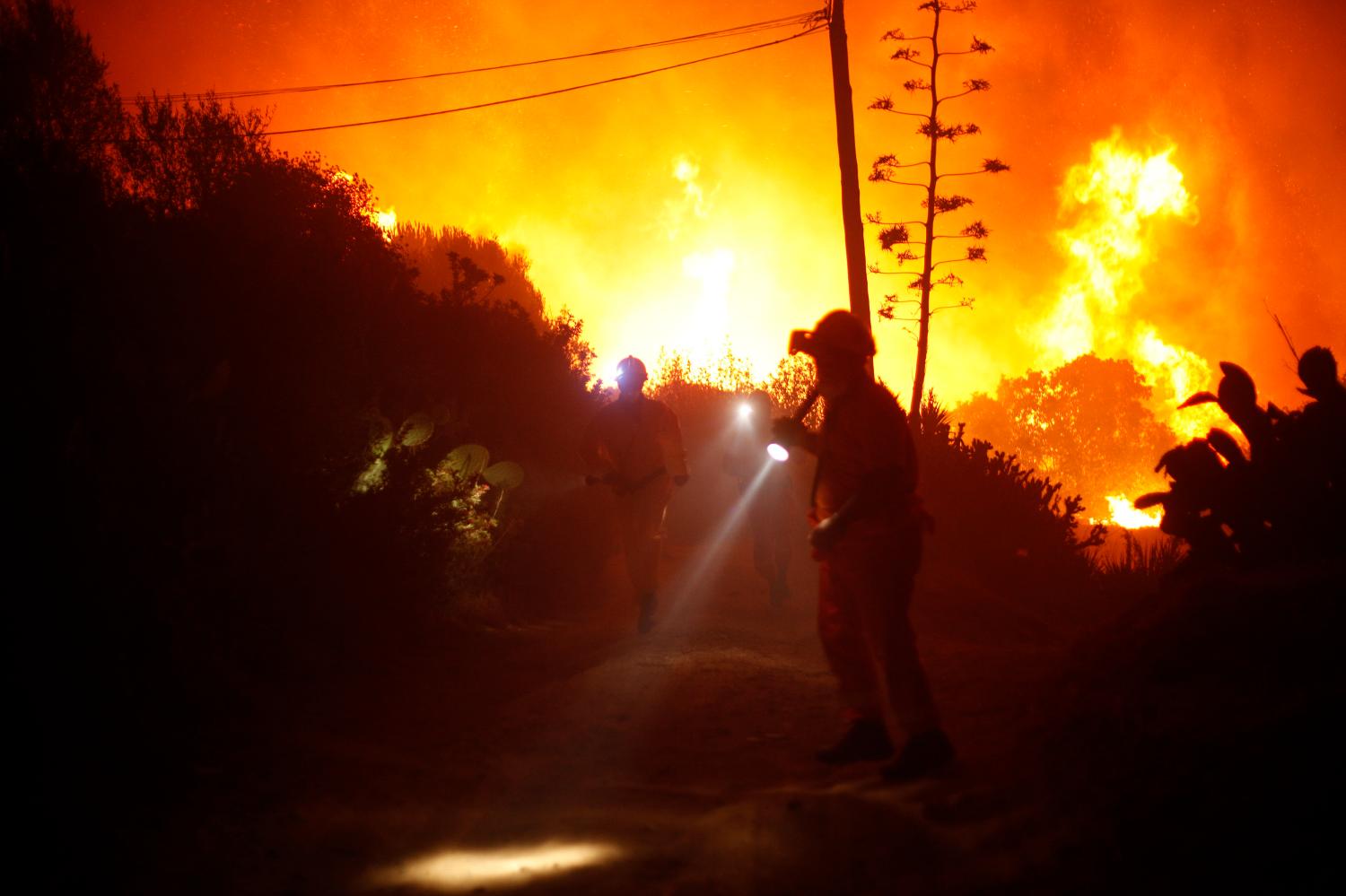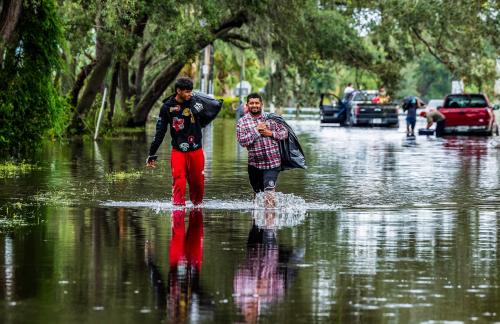While there are different definitions of wildfires, it is generally agreed that wildfires, whether accidentally or deliberately caused by human beings, originate outside of densely populated human settlements and that humans lose control over how the fires burn, at least for a period of time.
Compared to other kinds of hazards such as earthquakes, volcanic eruptions, floods or storms, where humans have little influence on the onset of the hazard, humans are directly implicated in causing wildfires. For example, in the US in 2011, of 74,126 recorded wildfires, 63,877 or 86.2 percent of fires were caused by humans. The way in which a wildfire spreads depends on a set of factors, including topography, weather (with dry and hot conditions usually favoring the onset of fires and wind determining their spread) and fuel (the material available for the fire to burn).
More than most other hazards, human action can not only mitigate the effects of wildfires but can intervene to prevent its onset and spread. While humans stand little chance of stopping floods or landslides once they have begun, many countries have become quite adept at successfully fighting wildfires, meaning that the hazard often can be controlled before it causes a disaster. Forests and grasslands can be burned proactively to prevent uncontrolled burning. Forest areas can be cleared of dry fuel to prevent fires from starting.
Even though they are often harmful to humans, naturally occurring wildfires play an important ecological role. The process of burning returns nutrients to the soil, destroys dead or decaying matter and can also rid forests of both disease-ridden plants and insects which harm the forest ecosystem.
The Food and Agriculture Organization’s 2010 Global Forest Resource Assessment reports that an average of 64 countries, representing 60 percent of the global forest area, reported 487,000 vegetation fires per year during the period 2003-2007. The list was topped by Mozambique, the United States, Madagascar, Poland, Portugal, the Russian Federation, Spain, Argentina and Hungary, all of which reported an average of more than 10,000 fires per year. The low number of reporting countries shows that on global levels, serious data and reporting gaps on wildfires exist.
In terms of the surface area burned by wildfires (including forested and non-forested areas), data from 78 countries, representing 63 percent of the global forest area, reveal that an average of just under 60 million hectares (148 million acres) of land was burned per year during the 2003-2007 period, an area approximately the size of Ukraine. The largest areas burnt were reported by Cameroon, Mali, Botswana, Chad, Namibia, United States, Ghana, Canada, Mongolia and Senegal.
While globally there are a large number of wildfires, a large majority of them do not cause disasters as they do not threaten human health, lives and livelihoods. The International Disaster Database (EM-DAT), which only records disasters of a certain size, reports 156 wildfire disasters in the 2000-2011 period, making up only 3.39 percent of all natural disasters recorded in the database during that decade. The 780 fatalities from wildfires that the database records make up 0.07 percent of global disaster fatalities during the period. This is still more than the number killed by volcanoes (0.05 percent), but far below the number of deaths caused by earthquakes (responsible for 63.5 percent of fatalities), storms (16 percent), extreme temperatures (13.46 percent), floods (6.2 percent) and drought.
To get a better picture of the scope of and challenges caused by wildfires, this chapter looks in more depth at some of the major wildfire disasters in recent years.

(Source: EM-DAT – The International Disaster Database, accessed 9 October 2012,
www.emdat.be/
)
Download the full chapter » (PDF)
| « Chapter 2: Assessing the Work of Regional Organizations in Disaster Risk Management | Chapter 4 – Disaster Risk Management: A Gender-Sensitive Approach is a Smart Approach » |
The Brookings Institution is committed to quality, independence, and impact.
We are supported by a diverse array of funders. In line with our values and policies, each Brookings publication represents the sole views of its author(s).




